Was all beer sour before Pasteur?
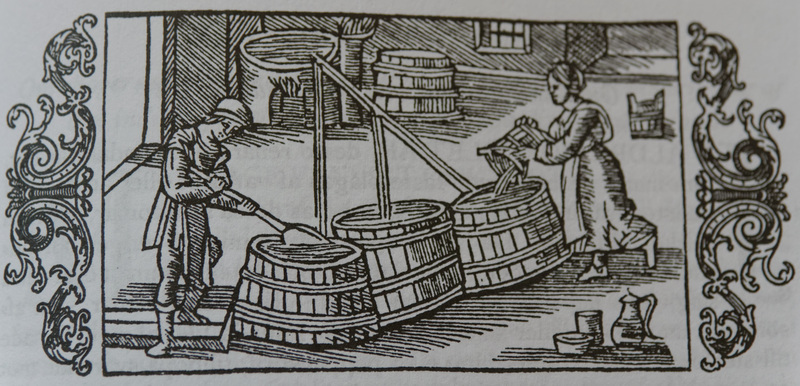
Beer brewing, woodcut from Olaus Magnus's History of the Northern Peoples, 1555 |
It's often said that before Pasteur's work on yeast (and Emil Christian Hansen's introduction of the pure-yeast system) all beer was sour. Various lines of reasoning lie behind this claim. One is that all beer was spontaneously fermented back then, because nobody knew what yeast was. Another is that because brewers had no microbiological control over their yeast, they were effectively using wild yeast, and thus they would necessarily get sour beer. Many people claim there must necessarily be other organisms than pure brewer's yeast in these yeast cultures, and that these would turn the beer sour.
All this was a long time ago, however. Pasteur did his work in 1857, and Hansen developed his system in 1883. What do we know today about the result of brewing with uncontrolled yeast, the way people did before the pure yeast system? Actually, quite a bit.
Historical sources
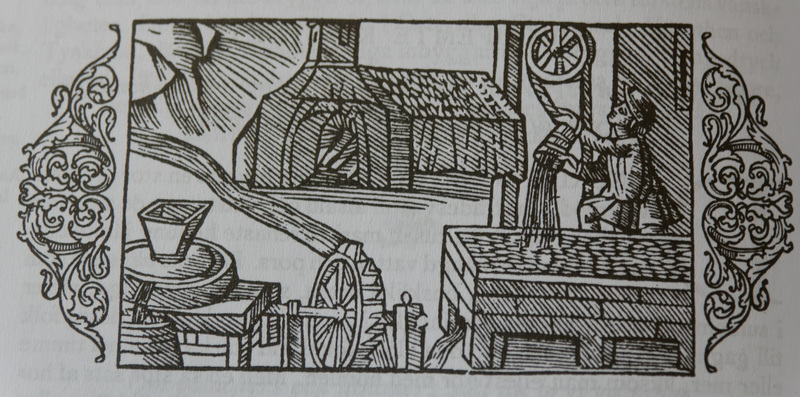
Beer brewing, also from Olaus Magnus |
Let's start with historical sources. In 1555 the (nominal) archbishop of Sweden, Olaus Magnus, published an account of the northern peoples. In book 13 there are several chapters dedicated to wine, mead, and beer. He describes both sweet and sour wines, but of beer he says that people brew it sweet or bitter according to preference. He says winter water is the best, as it never makes the beer go sour. Today we can see what was really going on, but he was right that beer was less likely to go sour in winter, due to lower temperatures. He says winter water is used in the brewing of Danzig beer, "the noblest and healthiest beer". It's clear from the text that to Olaus Magnus, beer is a sweet or bitter drink, and mainly sour by accident.
In 1616 what is known as the first Danish cookbook was published. It's really a Danish translation of a book first published in Bavaria in 1598, by one Anna Wecker. The second recipe is for beer. She writes of the recipe that the beer is "thick and well-tasting, but in summer it doesn't keep long, because it soon sours." Her proposed remedy for that is to let it boil well, for 2-3 hours, and to use lots of hops.
In 1780 the first account of sahti brewing was published by Carl Niclas Hellenius. He says that using unmalted rye flour is not good, because being unmalted it "does not give in the same degree as the barley the suitable sweetness to the drink." Later he writes that one of the trickiest things in brewing is adding the yeast at the right temperature. If the yeast is added when the wort is too cold, the beer sours.
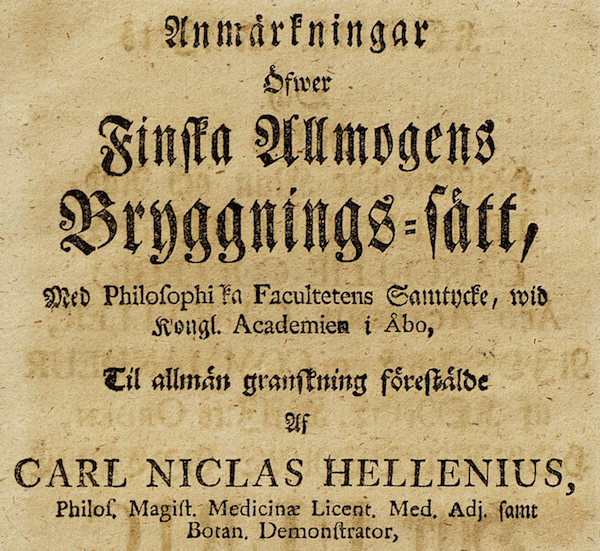
The title page of Hellenius's article on sahti brewing |
I have several more pre-Pasteur sources on beer brewing, all of whom say the same thing. Beer should be sweet or bitter, but not sour. However, preventing it from going sour can be tricky, especially in summer, and it doesn't always keep very long. It's not that beer cannot keep, however. Olaus Magnus writes of beer kept for 10-20 years, and Ticcander in 1792 writes of Finnish beer that was best when kept 2-3 years. And so on.
As for knowing about yeast, all of the sources describe adding yeast as a key part of the process. Olaus Magnus (1555) says one adds the dregs from the previous beer, or if these are not available, bread yeast. A few chapters earlier he talks about using yeast when making mead. Anna Wecker (1616) simply says to add yeast. Hellenius (1780) likewise. So obviously people knew about yeast and what role it plays in brewing, and using it was already well-established practice.
Own experience
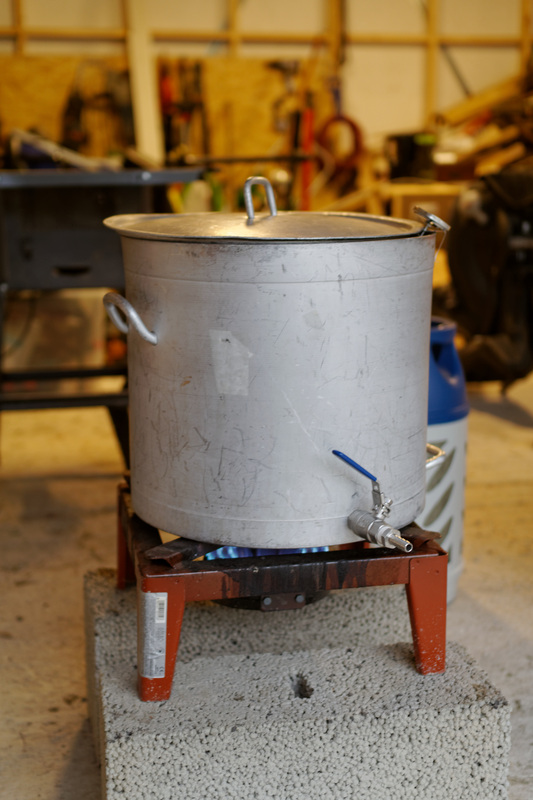
Brewing with kveik |
All this is just me interpreting old texts, however, and as such not conclusive. However, I have another source of information, which is my own experience with beers fermented with exactly the sort of uncontrolled yeast that was used before Pasteur and Hansen. Let's go through those:
- Sigmund Gjernes's vossaøl, on four occasions (it had a slight acidic tartness the fourth time)
- Vossaøl from Ivar Løne (not sour)
- Vossaøl from Svein Rivenes (not sour)
- Modern recreation of Sigmund's recipe (brewed twice, not sour)
- Jovaru Alus, many, many times, including when past its best (not sour)
- Ramūno Čižo Keptinis several times (not sour)
- Three beers from Su Puta (not sour)
So I feel reasonably confident in saying that beer does not need to be sour just because one doesn't use a pure yeast strain. From the historical sources we know that's how people usually brewed, even before Pasteur.
But what about the purity of the cultures?
Microbiological analysis
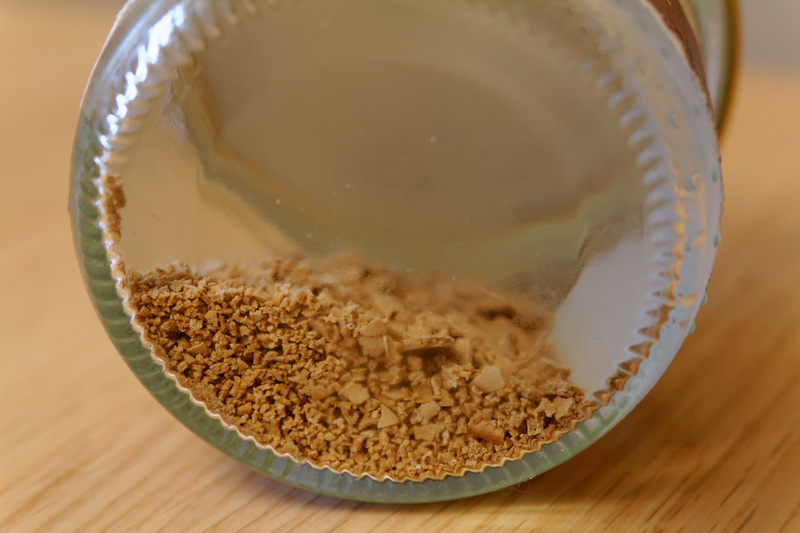
Dried kveik from Stranda, Norway |
So far two kveik cultures have been analyzed by professionals. In both cases the cultures were found to be pure Saccharomyces cerevisiae. One such culture from Lithuania was DNA-sequenced and found to be odd, but still Saccharomyces, if not necessarily Saccharomyces cerevisiae.
So that seems pretty definite, but intriguingly, we still have one more line of evidence to explore.
Chemical analysis
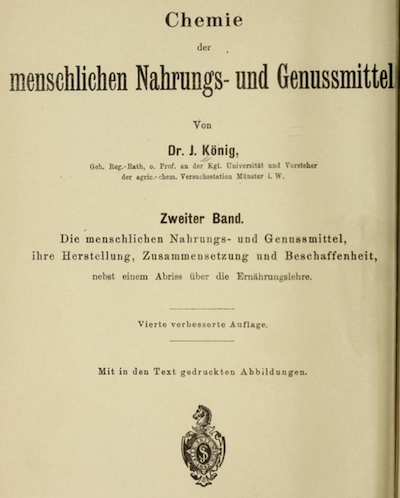
The title page of the book containing the analysis results |
There is not a whole lot of 19th century beer available for chemical analysis, but it so happens that Ron Pattinson has dug up a whole raft of chemical analyses of 19th century beer that include analysis of the acid contents of the beers. According to Ron below 0.1% is good, above 0.2% you get a detectable tartness. Another source says lactic acid makes up about 0.18%-0.52% in geuze, which seems to fit well with what Ron wrote.
Going through Ron's results we find:
- North German lager beers, 1880-1893: 0.25% lactic acid on average
- Bremen lager beers 1879-1884: 0.1% lactic acid on average
- Kiel lager beers 1884-1893: 0.07% lactic acid on average
- Northeast German lager beers, 1880-1897: 0.16%
- Erfurt lager beers 1879: 0.11%
- Bohemian pale lagers, 1886-1894: 0.14%
- Bohemian dark lagers, 1888-1892: 0.17%
- Bohemian strong lagers, 1888-1892: 0.19%
- Bohemian, Austrian, and German lager beers, 1876-1895: 0.17%
- Westphalian lager beers, 1879-1893: 0.19%
Curiously enough, these analyses are pretty unanimous in that the beer had more lactic acid than you'd wish. Nearly all of the averages are below Ron's 0.2% threshold, and the ones from Kiel are well below even the 0.1% level, but it does mean a good number of individual beers were above 0.2%.
So what does that mean? My guess is that sanitation and refrigeration during transportation and in bars may have left something to be desired. Even so, the beers were not sour, but a good number had an acidic tartness to them.
On balance, I think it's fair to conclude that most pre-Pasteur beer was not sour, but that a good bit of it was tart. And that very likely the use of non-pure yeast was not the cause of the tartness.
Similar posts
When did people start reusing yeast?
You often hear people say that "before Pasteur nobody knew about yeast," and that using yeast is a fairly modern invention
Read | 2018-04-29 13:42
Yeast terminology, part 2: bacteria
We continue the series on the family tree of yeast with a post on bacteria
Read | 2015-09-05 15:28
Pasteur and the beer of national revenge
Pasteur was already a scientific icon when he decided to work on brewer's yeast
Read | 2017-09-03 13:40
Comments
Morten - 2014-10-26 13:40:16
Richard Ungers well researched book "beer in the middle ages and the renesaince" mentions good yeast being sold in Norwich in the 15hundreds and breweries having a special place were they stored their yeast. Just because they did not have scientific brewing, does not mean they did not know what kept the process healthy and resulting in a nice tasting brew.
Lars Marius - 2014-10-26 16:07:41
@Morten: True. Unger's book also mentions evidence for the reuse of yeast going back to the 14th century. By the 16th century it was common practice, he writes, citing legislation in Harlem as a source.
Reading accounts of farmhouse brewing I'm fascinated by how much traditional brewers have worked out by trial and error. One Russian brewing technique was to mash for 24 hours (!!!). Normally, this would give you sour beer, as lactic acid bacteria would go to work once the temperature goes below say 45C. But they kept the mash tun on the stove in the house, thus avoiding the problem. Obviously, they didn't know about the bacteria, but they'd seen the problem and found a solution.
Patrick Durusau - 2014-10-26 17:00:44
Lars,
A lead on research into even older brewing of beer and other beverages.
The Beer Archaeologist:
http://www.smithsonianmag.com/history/the-beer-archaeologist-17016372/?all
Patrick
Lars Marius - 2014-10-26 17:05:18
@Patrick: Thank you! Somehow I missed that one. I'm actually about to read one of his papers on analyses of Nordic "beer". He's doing really great work. His book "Uncorking the past" is great, too.
Jeff Alworth - 2014-10-27 12:29:25
A few comments. Pasteur himself said that the best way to prevent acidification was lagering: "How is it that the use of ice and yeast operating at a low temperature [in lager brewing] so greatly facilitates the preservation of our beer and enables us to secure such striking advantages? The explanation is simple: the diseased ferments, which we have pointed out, rarely appear at a lower temperature than 10 C. (50 F.), and at that temperature their germs cease to be active."
Since lager beer goes back centuries, I think it's safe to say that Bavarian beer was probably fairly sour-free even by modern standards.
But that's one thing that makes me incredibly suspicious of old texts: by modern standards. Language is not precise, especially in describing flavor. It's always relative, and we always fold in myriad assumptions when we describe anything. When I read sources like Lacambre, I read "sweet" as "not yet soured." It's not the modern definition of sweet, which means "not hoppy." If the accepted baseline for beer was always a bit tart (by modern standards), then all the terms writers used would be relative to that reality. We have zero-level thresholds for "sour" because we can control microbiological activity. Did 19th century writers share that threshold? My strong suspicion is no; therefore, beer that was "sour" was relatively sour--that is, sourer than the baseline.
Without being able to taste it ourselves, I don't know that we can know the microbiology of pre-20th century beers based on the descriptions of contemporary writers from earlier periods.
Steve - 2014-10-27 14:19:12
What a great piece. Sign me up for more!
Lars Marius - 2014-10-27 14:39:27
@Jeff: All good comments. Thank you.
Did Bavarian beer have less acid? I must admit I have no idea. I guess we'll find out if Ron publishes analyses of Bavarian beers. Certainly your theory is plausible.
I totally agree that it's near-impossible to know what level of acidity a writer in 1555 would consider "sour". However, you'll note that I have actually tasted quite a number of beers brewed using the same level of "microbiological control" that all brewers used before Pasteur and Hansen. I've even brewed a couple myself. Those beers were not sour, or even faintly tart (except for the one bottle).
Further, those microbiological analyses I referenced were analyses of yeast treated in exactly the people did it before Pasteur and Hansen. Those analyses were not so detailed that it could be guaranteed that there were zero bacteria in the sample, but Chris Bond did write that if there were contaminants they were there in such low levels that very likely they would not affect the beer. And my repeated experience is that they do not.
So I was actually quite surprised to see those relatively high acid levels in Ron's posts. Given what I've leared about this type of yeast so far, it seems to me that the acid must come from other sources than the "wild" yeast.
Amahl Turczyn - 2015-04-08 14:58:36
Great points here. Probably worth mentioning that Japanese brewers used a heat treatment on finished sake after it was bottle to keep it from spoiling. They knew about pasteurization long before Pasteur's time, and while some ancient types of sake were reported to exhibit slight acidic character due to the presence of lactic acid (primarily from working the steamed rice in the starter, or moto, by hand), most sake was not described as sour.
Bill - 2015-08-18 04:51:34
Nice writeup and pictures! You really put a lot of info in a small spot. Nicely done!
For several years I have been making homebrew from home-malted barley (wheat and rye also)and yeast from the back yard. I find if the beer doesn't pick up a bacteria, then it tends to have a pretty mild flavor. It may have a weird smell, though, depending on the yeast.
From my experiance, only when the beer gets a bacteria in it does it taste sour. And even then, it may taste good. That is up to a person's taste.
Christian Skovdal Andersen - 2016-01-04 10:49:20
Interesting read and very much in tune with our own experiences in developing a house yeast for our brewery in these past 18 months. We ended up using a culture that was collected in wort sitting in bucket underneath the apple tree in our garden in early summer for a few days.
It is a very strong fermenter - even compared to many commercial yeast strains and it ferments clean with not even a hint of tartness - even in modestly hopped wort (<10 IBU). We kettle-sour the wort or blend it to get tartness in the beers we seek that character in.
Ulrich Bähr - 2017-07-18 07:29:43
Just came across your article and would like to add another thought: our experiments to recreate mesolithic stone-age beer indicate that hop makes the difference. Hop inhibits lactobacillus and the beer stays quite stable and "sweet". Without hop you have to refrigerate the beer (which was impossible then) or drink it quickly. Fresh unhopped beer is somewhat sour - but tasty. A week or two later the drink might have even scared a Viking. As you have found out as well, it helps to activly add yeast (no matter what kind). It simply requires a minimum number of yeast cells per liter to win the battle in the wort.
David King - 2018-07-28 08:59:11
great blog. One thing that confuses me though is the part about acid content of beers, relating to them being tart. Are the quoted figures supposed to refer to a specific acid, ie lactic, or total acids? If it's total acid, from what I understand and my possibly not very good mental calculator, wouldn't those numbers be pretty standard or even low by today's standards? Obviously different acids have different thresholds for perception, so the 2 percent number might only apply to some types. That's why wine cider brewers sometimes add malolactic enzyme to soften the perceived acidity. That would be born out by higher acidity in the dark lager as roasted grain is more acidic..? I may have this completely wrong however, as I'm not an expert on acids and ph, especially given how hard reading about the subject online is due to the ocean of illiterate writing on the subject by health gurus that don't understand the difference between ph and alkalinity... Anyway thanks for the great blog.getting some kviek samples from someone, pretty excited to try them out!
Lars Marius Garshol - 2018-07-28 10:10:21
@Ulrich: Well, some level of refrigeration was possible, through storage in cool cellars. Some people also built "ice pits" with ice and sawdust. But in general people couldn't achieve the same level of cooling as today. Huge numbers of people used juniper, probably since before the introduction of hops, and we're still not quite sure what the effect of that is.
Lars Marius Garshol - 2018-07-28 10:11:13
@David: Thanks! These figures are for lactic acid only.